Akaroa salmon farmers aim to rear happy, healthy fish from sea to plate
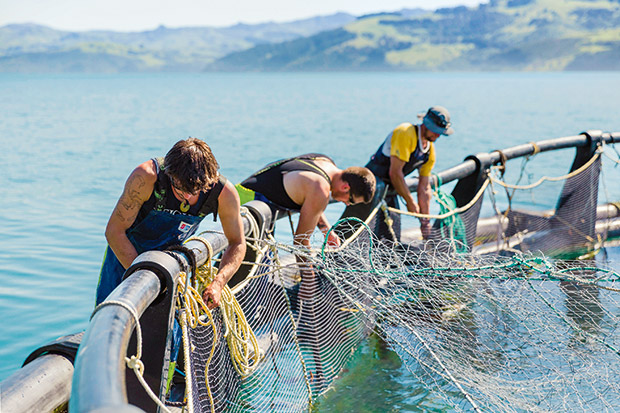
Akaroa Salmon wins NZ Life & Leisure’s Spirit of NZ Award for its three decades of high-quality food production and careful stewardship of fish stock.
Words: Lee-Anne Duncan Photos: Kirsty Middleton
With 700,000 fish to feed, a day off the water isn’t an option, no matter how hard the rain falls or how high the southerly whips up Akaroa Harbour.
It’s been some years since Duncan Bates, the current managing partner of Akaroa Salmon, has had to drive to the end of a long, winding gravel road, haul sacks of feed from his truck to the shoreline and row a wooden dingy out to hand feed his growing salmon. Duncan now spends most of his time at Akaroa Salmon’s office and processing factory in Wigram, Christchurch, but — with his arms folded and the rueful grin common to farmers relaying past travails — he remembers those days well.
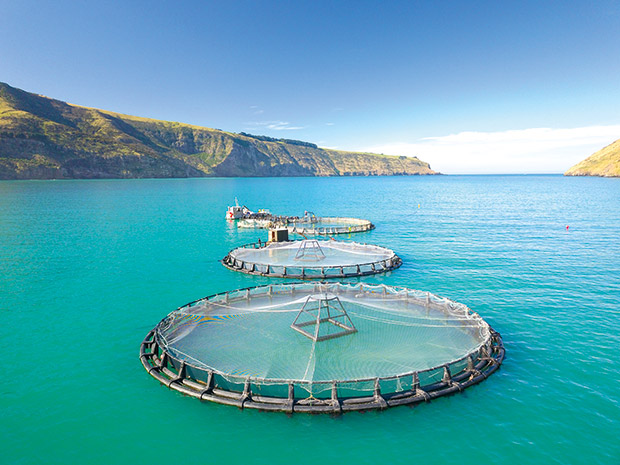
They were the old days of the mid-1980s when Duncan was “a young, energetic guy”, and he and his father Tom “had an idea and were a bit stubborn”. That idea was to farm king salmon. Duncan and Tom twigged to the plan on a family holiday to Stewart Island in 1983, where they visited the country’s first commercial salmon farm.
“I’d just finished university and wanted to go farming. But, for whatever reason, Dad decided I shouldn’t. So I was hunting around for something to do. I wanted to work in primary production — my family began farming on the Banks Peninsula in 1858, and that does get into your blood. Dad and I saw the salmon farm and thought, ‘Maybe there’s an opportunity there.”’
Duncan and Tom knew wild salmon populated the coastline around the Banks Peninsula, and they knew Akaroa Harbour was reasonably sheltered. To prepare, Duncan spent some months at a Canterbury hatchery, followed by a year on a salmon farm in Stewart Island. Then, with a bank loan and the okay from the council and the local iwi at Ōnuku Runanga, Duncan got busy building a fledgling fish farm in Lucas Bay on Akaroa Harbour.
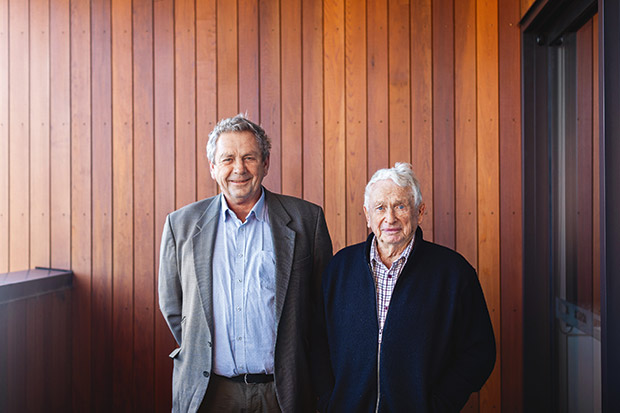
Duncan Bates and his dad Tom.
It was 20 months before the first harvest. That’s 20 months of shelling out for fish feed with no income stream and 20 months of rowing out and feeding in all weather. “But during that time, Dad and I pulled out a fish and cooked it over a barbecue. It was the first time we had eaten our salmon. We looked at each other and said how bloody nice it was, which was a good start.”
By 1988, with their first harvest approaching, a market had to be found. They didn’t even think of the local market — if there was one. “We heard of a New Zealand seafood broker in Los Angeles, so Dad called him. He said, ‘Yeah, sure, send it over.’”
The company processed that first harvest at a factory on the Akaroa Wharf, which had an export licence. Then, about 7.5 tonnes of salmon — which he relied on to fund the following year’s harvest — flew to California. It was well received, selling at US$20 a kilo when a Kiwi dollar bought US50 cents.
Aaroa Salmon continued to supply California until the mid-1990s when the Chileans undercut the market. The company switched its focus to building demand in New Zealand and set up a processing factory to be more responsive to the market.
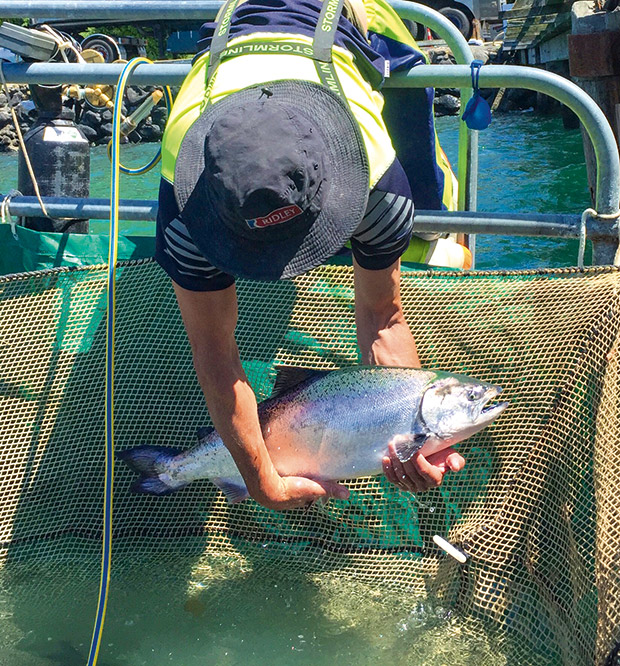
“Tom did all the regulatory work and marketing. He liked the idea of traveling around New Zealand, talking to chefs and selling our salmon. We were the first to get salmon onto restaurant menus,” says Duncan. Over the years, the proportion of export to domestic sales has dipped and risen through market, earthquake and pandemic challenges. Currently, about 60 per cent of Akaroa Salmon is savoured offshore, with 40 per cent mostly going into local retail and food-bag sales.
Tom’s retired now, and Duncan remains thankful for his support. “We worked well together. I was young and energetic, and Dad had a lifetime in farming, teaching him resilience and grit. I believe neither of us could have done it independently, and some fantastic people supported us. There were mistakes and times when there wasn’t much money. Sometimes I wanted to walk away, but Dad said, ‘No, hang in there, I think you’re onto something.’ I’m forever grateful for that.”
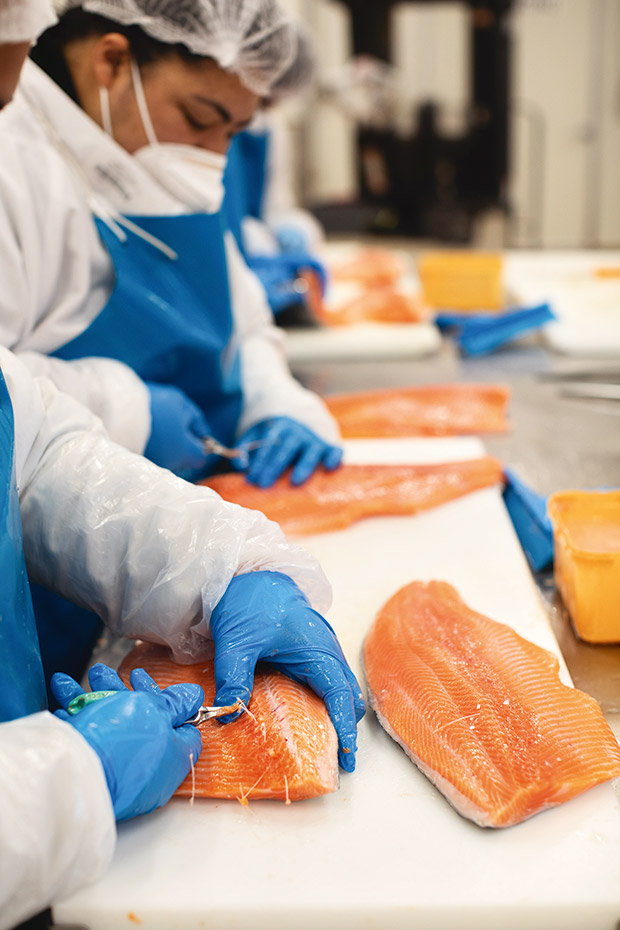
Now Akaroa Salmon has a fleet of seven purpose-built vessels to care for and catch the salmon and a team of 15 or so full-time aquaculture workers. About 40 more work in the office and factory. It’s no longer a family-owned business but still feels whānau-run, says Duncan. Some years ago, Tom sold his shares to a Singaporean family, who on-sold to Filipino shareholders, who in December 2021, sold their shares to Ngāti Porou, and an Auckland family, and — to Duncan’s delight — Ōnuku Runanga.
He loves having the shares back in Aotearoa, where Akaroa Salmon’s founding values — a commitment to the sustainability of the environment and the community in which they operate — are now actively embraced by all shareholders. Those include minimum stocking rates, the best fish food (see below) and — vital for Duncan — generous community investment back into Akaroa.
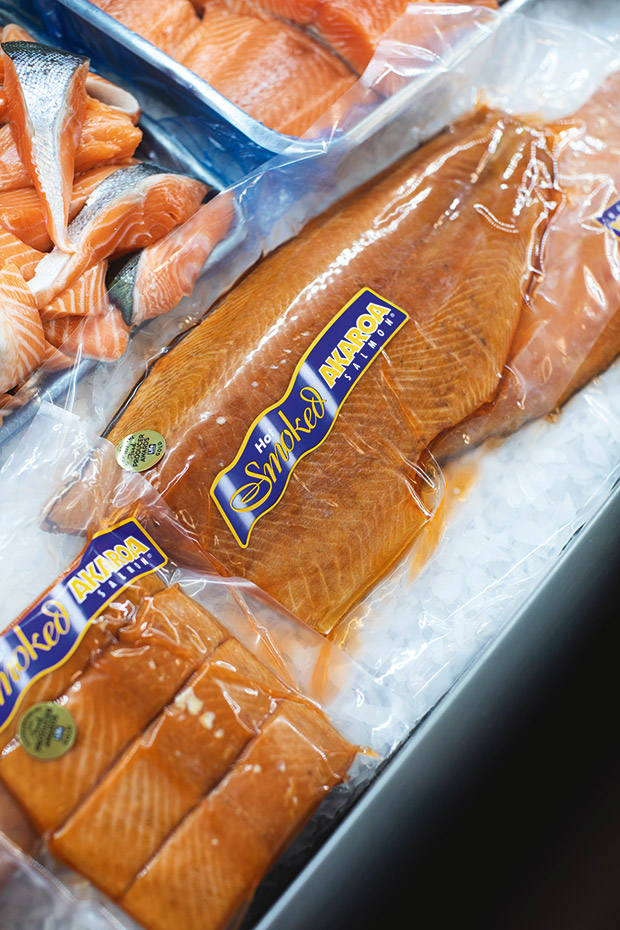
“I played cricket here, played rugby, had myself fixed up in the local hospital. When you grow up in a place, you’re part of it. You make a conscious effort, and you’re accepted. I love employing local people and local contractors, although it gets harder and harder to do. I love sharing with the community some of the successes we are fortunate enough to have.
“This is how farmers operate — we look after where we live. We are a farming family — we just took a skill set from sheep and cattle farmers and used it to farm fish.”
WHAT MAKES MY FISH HAPPY?
In the old days, Duncan fed three kilogrammes of fish product to grow one kilogramme of fish. That didn’t make sense. Now, his salmon feed is mostly vegetable proteins and fats, with some fish by-products from sustainably managed fisheries. “Our feed supplier has just said they won’t source raw materials that humans eat, as competing with humans doesn’t make sense. Also, we used to feed the salmon fish oil to boost omega-3s, but now we feed omega-3s sourced from algae. That’s made us a positive fish producer.”
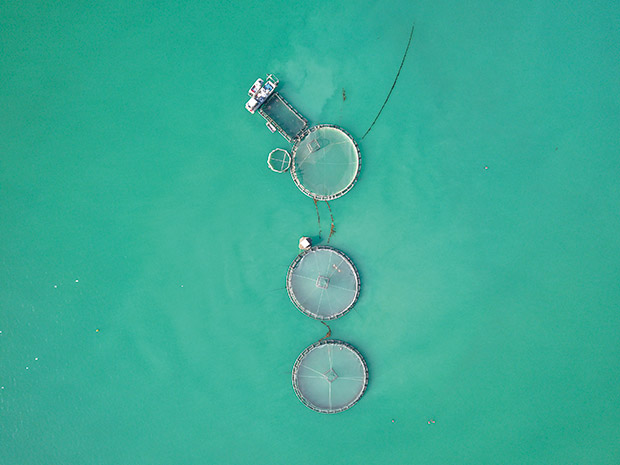
Duncan also allows his fish plenty of room to move. Each pen is 99 per cent water and one per cent fish, which protects the seabed, water quality, and — of course — the fish. “Farmers have empathy for animals. If you’re a bean-counter and you’ve invested a lot of money in water space, the natural thing is to utilize that investment to its maximum potential. Whereas I think, ‘When are my salmon happy?’
“I feel they’re happy when they’re in a biomass of fewer than 10 kilogrammes per metre squared, which is super light compared with salmon farms worldwide. But they can have significant production problems, and I think it’s better to have one live salmon than three dead ones.”
SPIRIT OF NEW ZEALAND
Each year in the Outstanding NZ Food Producer Awards, NZ Life & Leisure‘s Spirit of New Zealand Awards celebrates the pioneering and innovative spirit of Kiwi producers. Giving the award, NZ Life & Leisure editor Kate Coughlan explained that father and son Tom and Duncan Bates had to forge their own path since establishing Akaroa Salmon in the 1980s.
“The Bates family set up their salmon farm in clean sea water where the fish can be healthy, but it made life hard. Those early days of having to row out in storms to check on their stock must have tested their resolve. Now, their creative, pioneering work is paying off with their streamlined system for growing delicious food in a healthy environment.”
Citrus-Spiced Akaroa Salmon
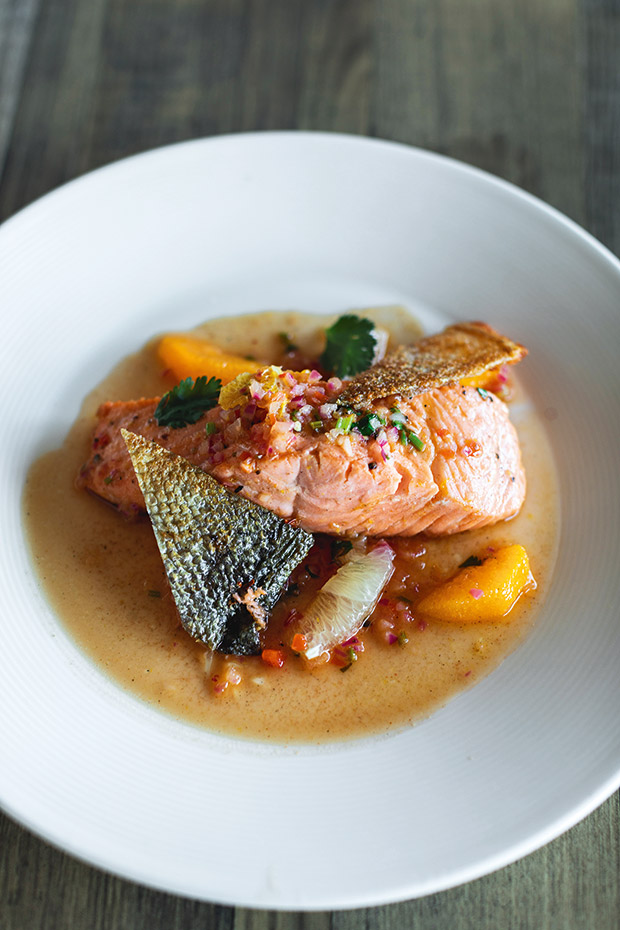
INGREDIENTS
1 orange, 1 lemon and 1 lime, zested
1½ tablespoons brown sugar
walnut-sized piece of fresh ginger, finely grated
½ small red chilli, finely diced
small bunch coriander, stalks chopped finely, leaves reserved
¼ small red onion, finely diced
a pinch of allspice
½ teaspoon paprika
4 x 180g Akaroa Salmon fillets
METHOD
Carefully peel and segment the zested citrus, retaining any juice. Mix the juice, zest and segments with the brown sugar, ginger, chilli, coriander stalks, onion, allspice and paprika. Set aside.
Sprinkle a little salt over the skin side of the salmon fillets, and season the other side with salt and freshly ground black pepper. Heat a slug of olive oil in a pan and add the fillets, skin side down.
Lower the heat and fry for 5-6 minutes until the skin is crisp. Turn over the fillets, remove the crisped skin and keep it aside. Pour the citrus-spice mix into the pan alongside the salmon and cook for another minute or two. Put the fillets onto four plates and spoon over the pan sauce. Garnish with the crisped skin and reserved coriander leaves. Serves 4

